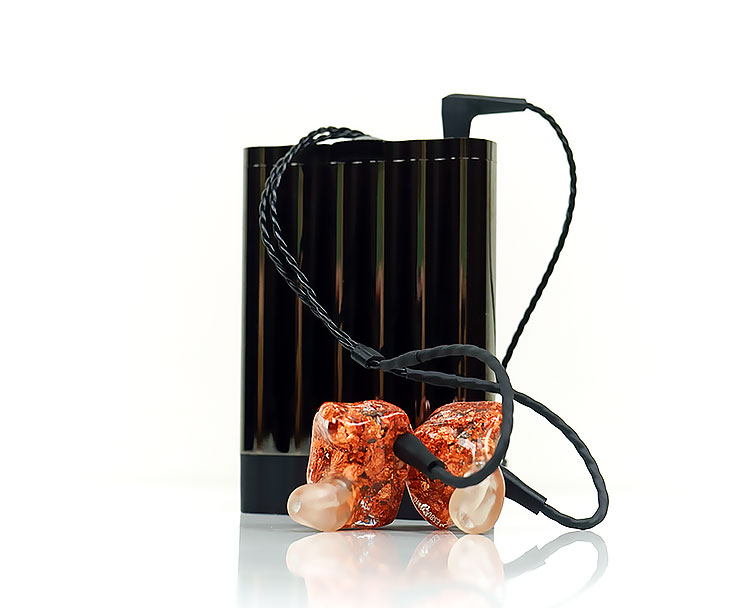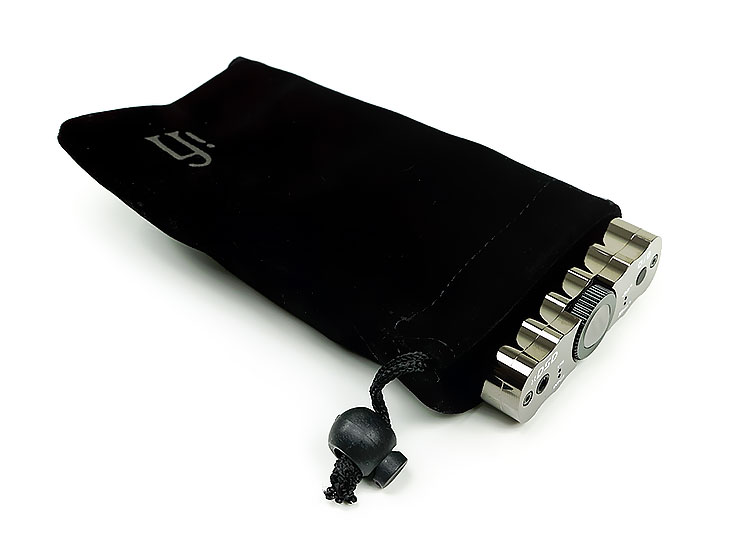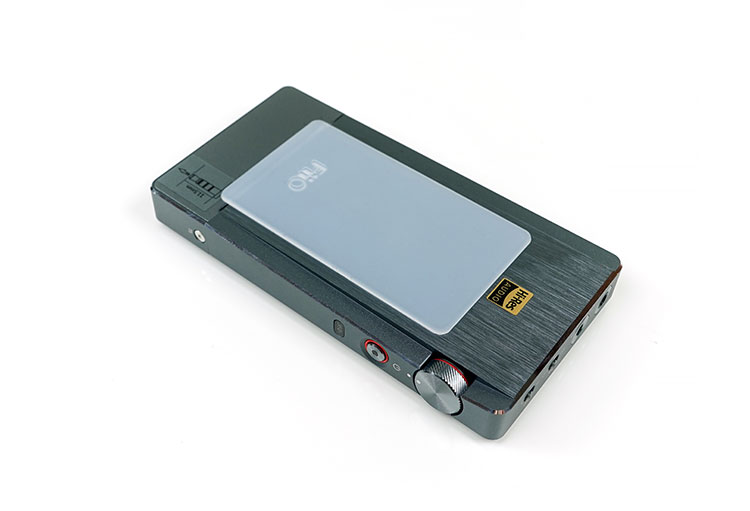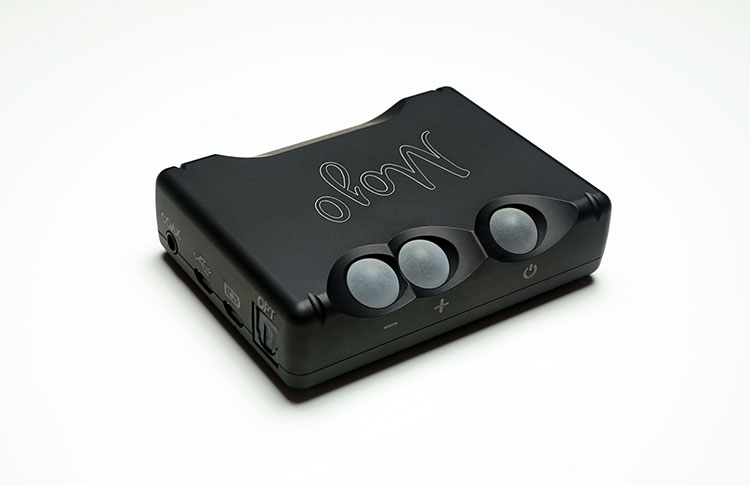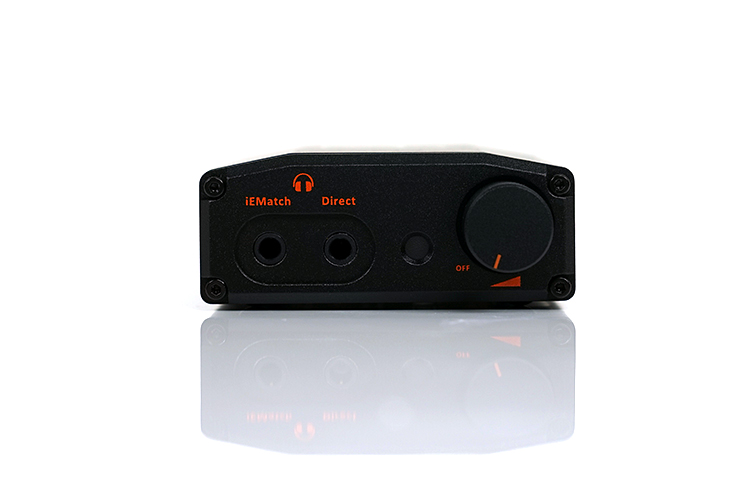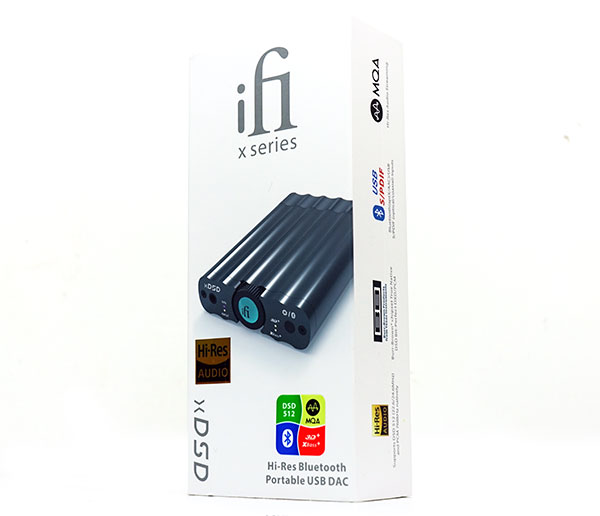Functionality
DAC
The xDSD uses the same Burr-Brown PCM1793 Multibit hybrid DAC architecture from the Micro iDSD BL. It is capable of bit-perfect processing right up to DSD and including DXD.
The general range of decoding is actually excellent and better than what the Nano iDSD BL was programmed to offer from a similar chipset. Decoding rates are up to PCM768kHz & DSD512 (24.6/22.6MHz) which is a considerable setup on the Nano iDSD BL’s DSD256 and PCM 384kHz. Importantly for TIDAL fans, the xDSD will render MQA files using MQA 88.2/96/176.4/192kHz filters.
Amping
The xDSD incorporates a customized opamp solution called an OV4627 ultra-low noise FET input Op-Amp. I am not entirely sure what that customized solution is based on, perhaps the TI OPA627, perhaps just a coincidence the numbers match. What we do know is the implementation is both unbalanced and dual mono to allow for the S-Balanced tech (3.5mm 4-pole) to work.
The xDSD offers a good deal more output power for medium efficiency gear than the Nano iDSD BL judging by the numbers and in our testing. On paper, the xDSD can output up to 500 mW into a 16Ω load compared to the Nano iDSD BL’s humbler 200mW into a 15Ω load. Going up to 600Ω both amps come out almost the same in terms of power at 20mW for the BL and 24mW for the xDSD.
Impedance & Dynamic Range
The output impedance of the amp stage is less than 1Ω, which is the same as the direct drive of the Nano iDSD BL. I can tell you that it is a noise-free experience also compared to the direct output of the BL. iFi’s Cyberdrive circuitry does an excellent job keeping the amp output quiet with a very black background for most sensitive IEMs whilst offering nearly double the potential power.
iFi is also quoting the dynamic range performance of the xDSD has a little perk up from the 109dB of the BL (direct output) to 113dB for the xDSD (A-weighted). Considering there was a -2dB drop in range using the IEMatch output of the BL and the xDSD is consistent from its single output you have to say, on paper, the xDSD Cyberdrive it the more optimal of the two solutions.
Wireless Features
I am going to presume iFi used the standard BT4.0 capable Qualcomm CSR8645 given the BT specs for the xDSD. The device is capable of delivering up to 16BIT 44.1K into an aptX stream via the in-built xDSD Burr-Brown DAC and not via the chip’s own built-in decoding.
That is a good thing, to begin with. However, aptX may not be enough in 2018 with the advent of LDAC and aptX HD. To future proof, you really need to move to the Qualcomm CSR8675 Series Bluetooth System-on-a-chip (SoC) or beyond. If that chip is not in there it is impossible for it to be upgradeable to aptX HD.
Sound Impressions
Tonality & Presentation
If you are coming from the Nano iDSD BL the xDSD is going to sound the more dynamic and resolving of the two. The new amp stage for me is more lifelike and accurate sounding and you should notice the difference immediately between the two of them when placed side by side.
The xDSD has traded in some of that Nano iDSD laid-back feel for a presentation that is more forward sounding and engaging. At the same time, this is a performance that is not overly aggressive and certainly not an analytical or bright signature.
I particularly like how the xDSD pushes the vocals just a little further forward than the Nano iDSD BL and gives them a little more space and air to breathe.
The xDSD still stays on the musical side of things. This is not a purely neutral experience, especially when compared to the FiiO Q5. The sound is slightly softer on the xDSD with a treble response that is well extended but not overly forward. You can change the treble presentation quite substantially and bring it further forward with a touch more energy using the 3D+ tweak.
3D+
The 3D+ tweak will also widen the staging of the xDSD creating a more open and spacious sounding midrange and a little more air and height. Some might find this tweak a little less forgiving due to the more aggressive treble but I would say keep it on for the additional perceptible clarity and contrast to the bass response it can deliver.
XBass+
The musicality and staging depth can also be enhanced using the XBass+ which nicely targets 100Hz and below to deliver more power and impact. I tend to prefer that approach and more often than not I keep XBass+ on along with the 3D+. You definitely will hear more low-end body around 60Hz to 100Hz and a touch more warmth but nothing that is overly dominant or bleeds into the mids.
Measure vs Listen
Using the two filters there is a nuanced change in the sound signature of the xDSD when you go from measure to listen. The ‘measure’ filter is a little more linear to my ears with better mids and treble presence. This is intended for the more critical listener.
The ‘listen’ filter pushes the voicing and top-end back a little so it is more relaxed sounding with more mid-bass warmth. This is intended for something a bit more forgiving and perhaps casual listening.
Synergy
CyberDrive
Those coming from iFi’s IEMatch infused amps may be slightly disappointed with the Cyberdrive’s noise performance. The noise floor and background hiss are somewhat higher with sensitive IEMs such as the CA Andromeda and SE846 and even the less sensitive Hum Pristine picked up on it. Compare that with the IEMatch output on the Nano iDSD BL which is completely silent.
The xDSD output hiss is higher than the AM3a Q5 and the Mojo also. You will need an IEMatch 3.5mm cable to get that completely silent background. Of course, bear in mind using IEMatch you will lose a bit of dynamic range and some attenuation in volume.
For less sensitive IEMs such as the CA Vega, Acoustune’s HS1551 CU, and the entry-level hybrids such as the Creative Aurvana Trio, the Cyberdrive runs very quietly.
Power & Synergy
On the plus side, the xDSD has more power on tap for more demanding headphones than the Nano iDSD BL. It can also outperform the Q5/AM3a with plenty of headroom to spare on planars such as the Hifiman Sundara and outmuscle it also on Senn’s classics, the HD600 and HD650.
The Q5 in unbalanced did not have enough power or gain to drive the Sundara properly. The xDSD can get to ear-splitting levels with the Sundara and sounds the livelier of the two pairings also. The slightly softer attack and natural sound of the xDSD also pair very well with the very clean and precise treble of the Sundara.
Select Comparisons
FiiO Q5
$349.99
Purpose
The Q5 is at a similar price point and offers many similar features including BT aptX, split USB charging, and data transfer. It also has the ability to tweak the sound signature (bass boost) and is purposed for both IEMS and headphones.
Form Factor and ports
It does not have the elegant design of the xDSD and is bigger and heavier though the form factor stacks with more balance on smartphones. The Q5 also has a standard micro-USB for OTG. I do wish the xDSD could offer that also over the USB-A male port.
DAC & Amp
Where they also differ is internal with their DAC and amp choice. The Q5 opts for a dual AK4490EN chipset compared to the multi-bit TI PCM1793 of the xDSD. The xDSD will sample at a much higher rate, DSD512, and PCM768kHz as well as render MQA which the Q5 cannot. The Q5 will only decode up to DSD256 and PCM 384kHz.
The Q5 has a more elaborate and flexible amping eco-system with both balanced 2.5mm and 4.4mm options. You can elect for cards with up to 800mW output potential compared to the xDSD fixed amp rating of 500mW into 16Ω. The xDSD has a single built-in amp that cannot be changed with the less popular 3.5mm balanced (s-Technology) output.
However, the xDSD Cyberdrive performance means that the noise floor of its amp stage is marginally lower than some of the FiiO amp options outside of maybe the AM1 and AM3a. You may experience a slightly less his out of the xDSD with efficient IEMs than the say the AM3 or AM5 amp cards.
Tone & Detail
This is an interesting match-up and to be honest the Q5/AM3a combo is supremely competitive compared to the xDSD. It has a touch more dynamic range, a more immediate cleaner analytical sound also even with the xDSD switched into the “measure” filter.
The xDSD is slightly softer, perhaps with a more natural hue to its timbre and a touch more laid back in its upper mids and treble performance. The xDSD could be considered the more forgiving of the two amps and the Q5 the slighter brighter and more exacting.
I also have a preference for how vocals are rendered on the xDSD. They have a slightly richer smoother tone to their delivery compared to the cleaner more neutral Q5 performance.
Noise & Power
In terms of noise, the AM3a is the quieter of the two amp stages, at least in unbalanced mode. Both the Hum Pristine and CA Andromeda showed higher levels of hiss on the xDSD than the AM3a.
The xDSD though is more powerful so IEMs such as the Vega have a little more refinement on the xDSD as well as more demanding headphones such as the MrSpeakers AEON. You will need to get the AM5 amp card to outclass the xDSD in terms of power using the Q5. The 2.5mm balanced on the Q5 will get you close though.
Bluetooth
Both have aptX Bluetooth capability and both run the signal through their respective DACs as opposed to any onboard SOC DAC in their BT chipset. Both have similar ranges before drop out of about 5-10m depending if there is a wall or physical barrier between the source and amp.
Tonally, I have a slight preference for the xDSD performance over the Q5 BT presentation. Just so you know the gap is not that big and neither is particularly neutral with a slightly darker less resolving sound than wired and a bit more bass presence.
The xDSD just sounds a bit more natural and spacious sounding. The Q5 is a little flatter to my ear in BT mode, not quite as dynamic and punchy as the xDSD BT sound.
Chord Mojo
$599
Technical
The Mojo 3 years later? Still competitive. It occupies almost the same target audience space as the xDSD as well as some engineering similarities. The Mojo technically can match the xDSD in decoding at DSD512 and PCM 768kHz but it does not have either native or rendering capability for MQA.
Amping
Both have fixed internal amps though the Mojo seems the more powerful of the two at 35mW into 600Ω compared to 24mW of the xDSD. The dynamic range of the Mojo is also a little better at 125dB compared to the 113dB of the xDSD.
Features
The Mojo does not have Bluetooth either. For that, you need to expand it with their $50 BT module or the Poly which puts the price up to $1000 or just under 3 times the price of the xDSD which has BT as standard. Both can be used on OTG and USB-DAC though neither has a line input for receiving analog signals. The xDSD does have that analog line-out though.
Design
The form factor is an interesting one because both have fairly compact sizes but the xDSD shades it for me in terms of pocketability. The Mojo build quality is far more robust than the xDSD but it is chunkier and unbalances stacking a little more.
Both have a light schema for volume and function control that takes some getting used to. The dial control of the xDSD is more comfortable and a little more user-friendly for me than the button mashing of the Mojo.
Noise & Power
In OTG mode the Mojo is dead quiet with a very black background and just slightly better in terms of power for demanding headphones and efficiency for working with super-efficient IEMs.
In terms of gain, the xDSD has a bit more flexibility for volume control than the Mojo. The Mojo gets loud and loud very fast with very efficient IEMs. The volume on the xDSD is more nuanced and less aggressive so you can play about with it a bit more.
Tone
The Mojo is actually a little more impactful and dynamic sounding than the smoother and softer sounding xDSD. It is closer sounding to the Q5 in terms of having a more neutral timbre but with just a bit more weight and body on the low-end than the FiiO variant.
The xDSD is the warmer of the two though it is not as warm or euphonic as the Nano iDSD BL contextually. It has a little more low-end warmth compared to the Mojo but a little definition and impact. The xDSD has a touch more richness to its instrumental timbre and a slightly softer attack than the Mojo, particularly the treble which is more forward on the Mojo.
Overall, the Mojo is the more accurate and articulate performer and the xDSD is the smoother and more forgiving sound. There is a reason why the Mojo is $200 more expensive.
iFi Nano DSD BL
$199
DAC
The Nano iDSD BL sites are a step lower than the xDSD though it uses the same multi-bit PCM1763 chipset of the xDSD. Decoding rates are a little gimped compared to the xDSD at DSD256 and 384kHz PCM, however, both will render the same MQA rates up to 192kHz.
Amping
The amping on the xDSD is more powerful and more advanced on the xDSD with rates of up to 500mW into 16Ω compared to 200mW from the BL. The BL also has IEMatch and direct outputs which do a fantastic job, however, the xDSD Cyberdrive tech does go a long way to negating the need for two different impedance rated outputs.
Features
The BL does not have a dual USB setup and only has a single USB-A male port for charging and data transfer. It also does not have the 3D+ and XBass+ tech that the xDSD has.
Both have ‘measure’ and ‘listen’ filters with similar effects on the presentation. Both have fixed line-outs, however, only the xDSD has a SPDIF input. The BL does not have any wireless connectivity, the xDSD has BT aptX up its sleeve.
Form Factor
In terms of build and design, the xDSD is the more attractive and modern looking of the two though both are very durable in their build quality. The xDSD is more slimline with better stacking potential.
Noise
Personally, I found the BL IEMatch output quieter in OTG when comparing the two devices using a medium efficiency IEM such as the Hum Pristine. I also did find noise to increase a little more with efficient IEMs such as the CA Andromeda. It sort of remained steady but discreet on the Hum and a bit more pervasive on the Andromeda.
Performance for noise on the xDSD is thus ok, but on the BL IEMatch, it is lower and better for efficient IEMs. Here I suggest buying the IEMatch 3.5mm cable for the xDSD if you detect hiss on OTG and be done with it. Gong wireless (aptX) with the xDSD is blissfully quiet though not as resolving as wired.
Tone
Tonally the Nano BL is a little warmer and thicker sounding than the xDSD. The xDSD opts for a more linear neutral to natural sound from that proprietary opamp installed. The instrumental timbre is cooler and a shade leaner than the euphoric richer BL performance. That means for me, the xDSD is a touch more natural and accurate sounding and also slightly more spacious in the mids given its more linear low-end.
Detail
The other thing to note is the technical ability of the xDSD. The dynamic range is better on the new amp stage and it feels they let the PCM1763 off the hook a bit more from the BL’s earlier implementation. Everything sounds a shade tighter also, particularly the low-end performance which has much better definition and is not as soft sounding as the BL.
The xDSD is the more resolving of the two amps but the higher noise floor kills the potential to run away with it on sensitive IEMs. If you are running more demanding IEMs, something like a Vega, the black background is much better and you get more of the micro-detail capability from the xDSD.
Our Verdict
The xDSD has created a new path for iFi and an important one at that. That path is wireless. Just at a time when the competition is pushing out streaming and wireless-ready products, iFi has responded.
The xDSD is a very modern design and well-built portable amp/DAC and a confident freshman release for their new X-Series range. I say first because knowing iFi there will be more variations, there nearly always is.
The net result is really about relevancy and the ability to tap into a receptive wireless audience that has been growing more critical and aware of good sound quality in the last year or two.
Cons
Of course, BT tricks do not count unless the sound is good and that it is. Could it be better? In some ways yes. The new Cyberdrive noise performance is a bit of a disappointment compared to the IEMatch output of old. It simply is not quiet enough for sensitive IEMs.
You can, of course, buy an IEMatch cable to get a hiss-free experience but I would have traded a few mW of power for a lower noise floor given the vast majority of users are likely to want to use IEMs.
The omission of an aptX HD capability is something that could have really future-proofed the xDSD beyond today’s popular aptX predominance. Not that aptX is going away but the difference between it and HD is stark in terms of audio quality, never mind the fact we didn’t even touch on LDAC as another option.
Pros
On the flip side, the BT sound quality is really good compared to other aptX capable devices. It was a smart move to run it through the internal DAC and not via the onboard BT chip. It is a little thicker, darker, and not as resolving as wired but compared to competing BT performances such as the FiiO Q5 I think it is a little more open sounding.
The wired sound is also excellent with plenty of connectivity options and tweaks. This is a more mature slightly more revealing and cleaner sound than the Nano iDSD BL. It is a step-up and competes very well indeed with the likes of the Q5, offering a viable and musical alternative at this price point.
Review Gear
- iFi xDSD
- FiiO Q5
- Chord Mojo
- iFi Nano iDSD BL
- Sources for OTG – LG G6, FiiO X5iii, Onkyo Granbeat
- Hum Pristine, Campfire Andromeda & Vega, Acoustune HS1551 CU
- Hifiman Sundara, MrSpeakers AEON, Sennheiser HD600 & HD650
iFi Audio xDSD Technical Specifications
| USB Input: | up to PCM768kHz & DSD512 (24.6/22.6MHz) |
| S/PDIF Coaxial and Optical Input: | up to 192kHz/24Bit |
| Dynamic Range: | > 113dB (A) |
| Volume Control: | -101dB…0dB in 1dB steps |
| Output power: | > 2.82V/500 mW @ 16 Ohm > 3.7V/270mW @ 50 Ohm > 3.8V/48 mW @ 300 Ohm > 3.8V/24 mW @ 600 Ohm |
| Line out Level: | > 2.1V @ 0dBFS (& 0dB Volume) |
| THD &N (1V/16R): | < 0.005% |
| Output Impedance: | < 1 Ohm |
| Battery: | 3.8V/2200mAh |
| Dimensions: | 95 (l) x66.5 (w) x19 (h) mm |
| Weight: | 127g (0.28 Ibs) |
| Warranty period: | 12 months |


